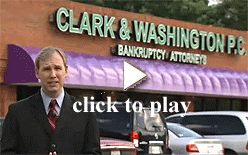
Chapter 7
| Chapter 13 | Chapter 7|
Mounting medical bills, job loss, and unfortunate financial decisions can sometimes make filing for bankruptcy the smartest choice. Chapter 7 can effectively relieve the honest debtor of burdensome debt and provide a fresh financial start. Chapter 7, entitled Liquidation, contemplates an orderly, court-supervised procedure by which a trustee collects the assets of the debtor's estate, reduces them to cash, and makes distributions to creditors, subject to the debtor's right to retain certain exempt property and the rights of secured creditors.
In order to qualify for relief under chapter 7 of the Bankruptcy Code, the debtor must be an individual, a partnership, or a corporation. Following the filing of a chapter 7 petition, an "automatic stay" goes into effect, preventing foreclosure, repossession, collection calls, etc. and an impartial trustee is appointed to determine whether there are any nonexempt assets available to liquidate for the benefit creditors.
In most chapter 7 cases, the debtor receives a discharge that releases him or her from personal liability for certain dischargeable debts just a few months after filing the petition. The discharge operates as a permanent order directed to the creditors of the debtor and prevents them from taking any form of collection action on discharged debts, including telephone calls, letters, personal contact, and legal action. There are certain categories of debts that Congress has determined to be non-dischargeable for public policy reasons. These debts, which are outlined in Section 523(a) of the Bankruptcy Code, must still be paid back after bankruptcy.


